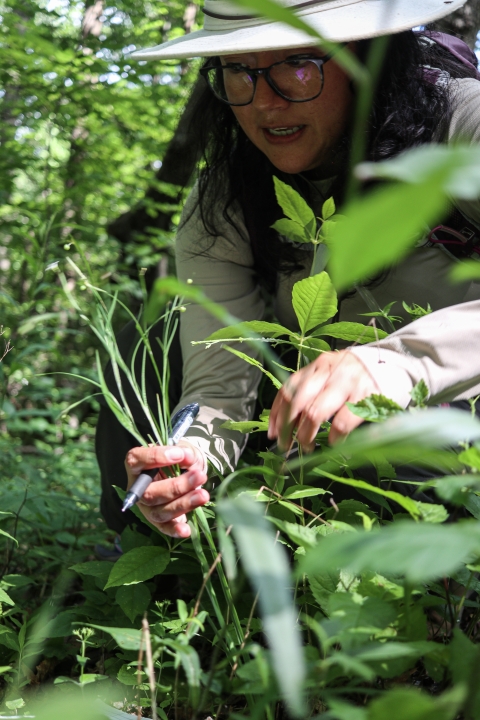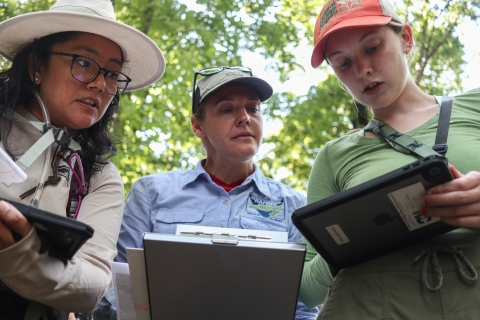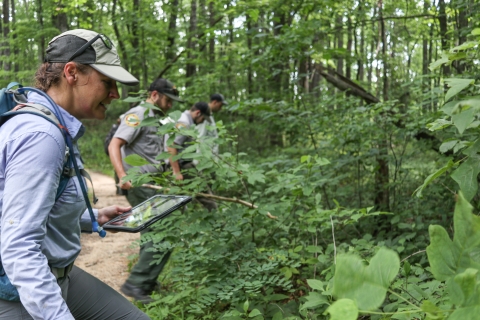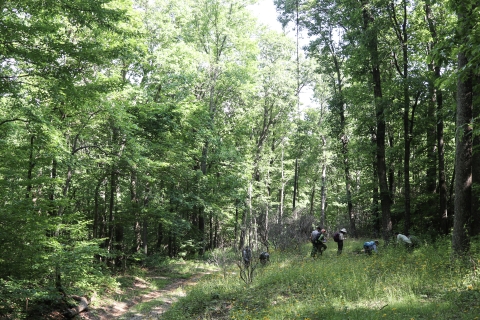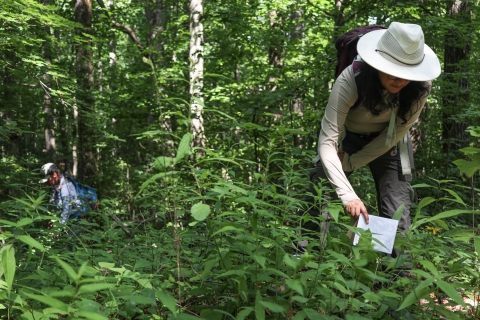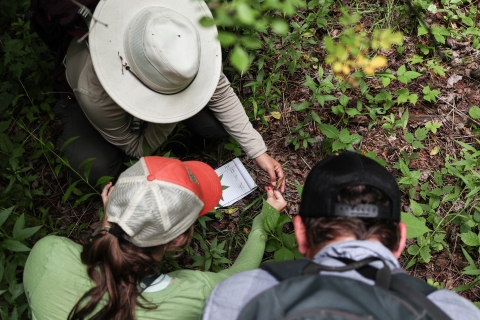The Hickory Nut Gorge area is one of North Carolina’s most majestic landscapes, with granite cliffs and outcrops ringing Lake Lure. The beauty of this landscape has long made it a draw for visitors, with the privately owned Chimney Rock Park opening in in the early twentieth century, becoming a signature destination in the area and providing access to the top of Chimney Rock and its sweeping view of the gorge and lands beyond.
In 2005 the North Carolina General Assembly authorized a new state park in the Hickory Nut Gorge area – the beginning of what would become Chimney Rock State Park. Since 2005 land has been added to the state park in several phases, perhaps most notably in 2007 when the private Chimney Rock Park was acquired by North Carolina State Parks. Chimney Rock State Park has become the centerpiece of conservation efforts in the gorge, complimented by the work of Conserving Carolina, Foothills Conservancy, The Conservation Fund, The Nature Conservancy, and other partners.
The Hickory Nut Gorge area is also a hotspot of biodiversity. It’s home to imperiled bats; the Hickory Nut Gorge green salamander, found nowhere else in the world; and one of the greatest known concentrations of the endangered white irisette, a plant found in only a handful of counties in the mountains and foothills of North and South Carolina.
Once a plant or animal is placed on the federal threatened or endangered species list, its status is periodically evaluated, typically every five years, to ensure it still warrants protected status. This review for white irisette is expected in 2024. Chimney Rock State Park is integral to white irisette’s conservation and in the run up to the status review for white irisette, Dr. Natali Ramirez-Bullon, the U.S. Fish and Wildlife Service’s expert on the species, worked with the North Carolina Natural Heritage Program to support state park staff as they ramp up efforts to monitor the plant.
Over two days in July, Ramirez-Bullon joined park and natural heritage staff as they searched for, found, and counted white irisette occurrences no one has surveyed since 2006. Biologists, rangers, maintenance staff, and interns gained experience in searching for this rare plant, and the information collected will inform the plant’s upcoming status review.


